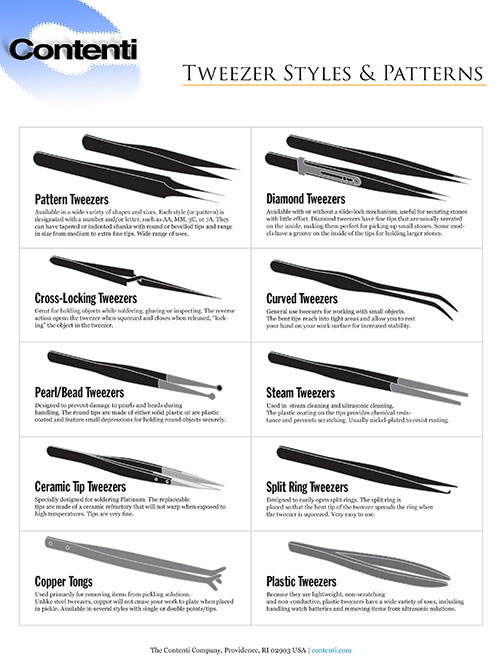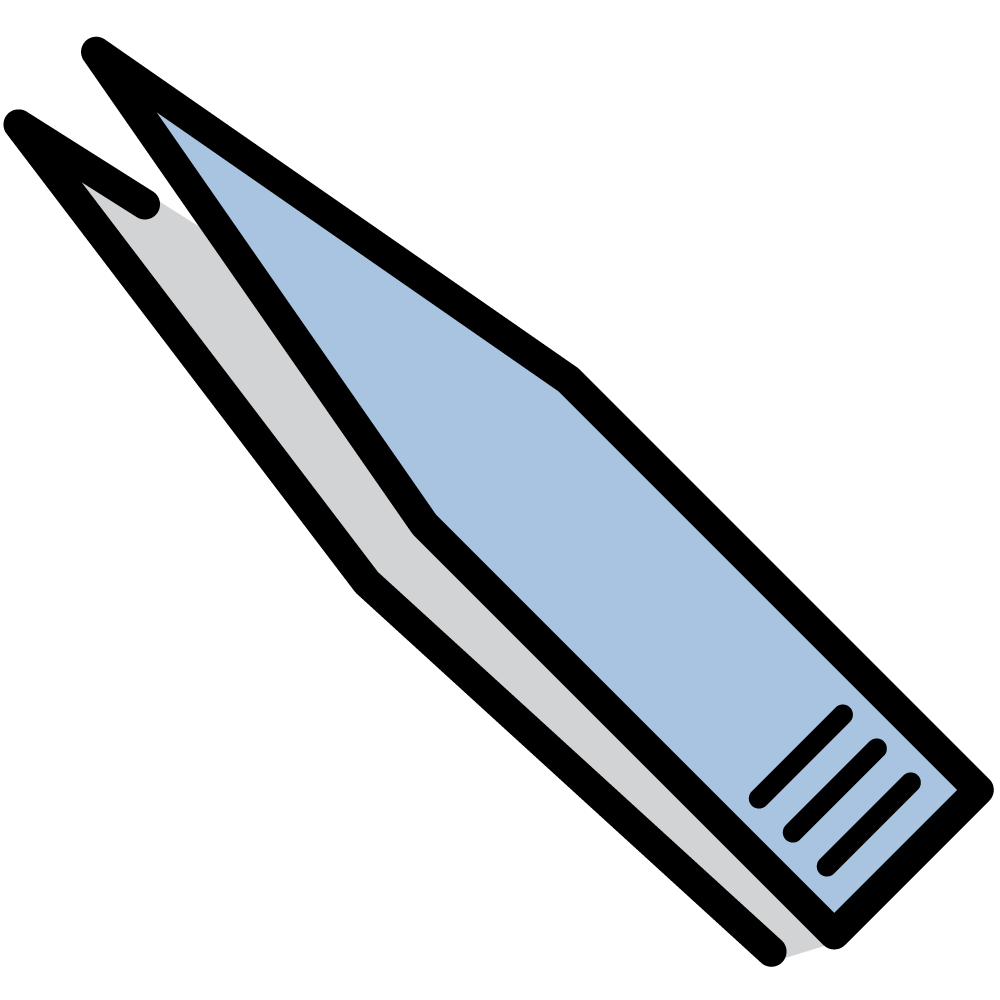Free Shipping over X amount
Tweezer Styles & Patterns
Jewelers rely on a range of tweezers for everything from stone setting to soldering. Learn the differences between pattern tweezers, cross-locking tweezers, and more. Download a pdf of Tweezer Styles & Patterns. You can also read a text description of this information below.
Pattern Tweezers
Available in a wide variety of shapes and sizes. Each style (or pattern) is designated with a number and/or letter, such as AA, MM, 3C, or 7A. They can have tapered or indented shanks with round or bevelled tips and range in size from medium to extra fine tips. Wide range of uses.
Diamond Tweezers
Available with or without a slide-lock mechanism, useful for securing stones with little effort. Diamond tweezers have fine tips that are usually serrated on the inside, making them perfect for picking up small stones. Some models have a groove on the inside of the tips for holding larger stones.
Cross-Locking Tweezers
Great for holding objects while soldering, glueing or inspecting. The reverse action opens the tweezer when squeezed and closes when released, “locking” the object in the tweezer.
Curved Tweezers
General use tweezers for working with small objects. The bent tips reach into tight areas and allow you to rest your hand on your work surface for increased stability.
Pearl / Bead Tweezers
General use tweezers for working with small objects. The bent tips reach into tight areas and allow you to rest your hand on your work surface for increased stability.
Ceramic Tip Tweezers
Specially designed for soldering Platinum. The replaceable tips are made of a ceramic refractory that will not warp when exposed to high temperatures. Tips are very fine.
Copper Tongs
Used primarily for removing items from pickling solutions. Unlike steel tweezers, copper will not cause your work to plate when placed in pickle. Available in several styles with single or double points/tips.
Plastic Tweezers
Used primarily for removing items from pickling solutions. Unlike steel tweezers, copper will not cause your work to plate when placed in pickle. Available in several styles with single or double points/tips.

